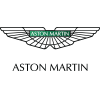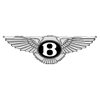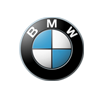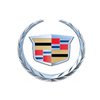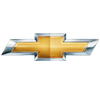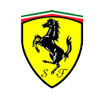Imagine Lifestyles is proud to offer luxury Aston Martin Car Rentals in Miami, FL, South Florida, Los Angeles, CA, New York, NY and Chicago, IL.
Learn more about the history of these luxury cars below, or about our complete fleet of luxury car rentals.
Aston Martin Foundation
Aston Martin dates back to 1913. At that time, Lionel Martin started racing automobiles at Aston Hill near Aston Clinton in Buckinghamshire, England. Lionel Martin proved his innovative car construction ability by fitting a 4 cylinder Coventry simplex engine to the chassis of a 1908 Isotta Franshini. The Isotta Franshini was an elegantly designed Italian car, which was popular with high society people. Martin’s innovative racing style caught the attention of Robert Bramford. Lionel Martin and Bramford then decided to partner up and create their own brand of vehicles under the name Bamford & Martin. Their first location was at Henniker Place in Kensington, which was where the first Aston Martin was created in March of 1915. Unfortunately, production did not get underway because of the outbreak of World War I and II.
The Aston Martin Company
David Brown Limited was a British Engineering company that bought Aston Martin post World War II. David Brown Limited also purchased Lagonda, a British car manufacturing company in 1947 and the two companies were virtually combined into one. In 1950 Sir David Brown, founder of DBL, began to label Aston Martins with the classic initials “DB” , which still remains intact today. The critically acclaimed, exotic Aston Martin DB2 sports car dates back to 1950, when an improvement on the previous 2 Litre sports model was made to increase the engine size to 2.6 Litres. The DB2 was designed as a closed coupe and later gave way to a convertible model. The convertible model accounted for a quarter of all DB2 series sales in 1953. The DB2 was an exceptional racing car for its time and set Aston Martin up for future success. The DB2 was preceded by the racing DB3 which was introduced in 1957 and then the Italian style 3.7 Litre, DB4 came in1958.
The Aston Martin name became synonymous with great racing car and the DB4 further confirmed that reputation. In 1963, the popular DB5 continued to reinforce the phenomenal Aston Martin racing status.Brown’s company continued to provide their customers with high performing luxury vehicles as seen in the DB6 through the 1960’s. The success of the Aston Martin design continued to be apparent in the manufacturing and production of the DBS and DBS V8 from 1967 through 1972.
Aston Martin Company Growth
Malcolm Victor Gauntlett was an entrepreneur in the fuel industry who had a passion for cars. Gauntlett’s passion resulted in his purchasing a 10% stake in Aston Martin. CH Industries, headed by Tim Hearley, bought a similar share of Aston Martin in 1981 and both companies took over as 50/50 holders. Gauntlett was made executive chairman and headed sales, marketing and development which led to Aston Martin being named the world’s fastest 4 seater production car. This prestigious title helped Gauntlett expand sales of Aston Martin Lagonda into Persian Gulf states, like Kuwait and Qatar. At this time Aston Martin was thriving, but Victor Gauntlett felt that the company needed more capital to survive long term.
In 1987 Guantlett happened to be introduced to Walter Hayes, who at that time was the vice-president of Ford in Europe. Ford was encountering problems over a recent brand acquisition of AC Cars. Regardless, of prior acquisition issues, Hayes saw potential in the Aston Martin brand. In September 1987 Ford took a share holding in Aston Martin. Ford then helped facilitate record sales for the limited edition Vantage, and 52 Volante Zagato coupes at £86,000 each. During this time Ford introduced the Virage range, which was the first new Aston Martin series made in 20 years and replaced the classic V8’s.
Ford for Aston Martin
In 1994 Ford placed Aston Martin into its Premier Automotive Group. PAG was Ford’s holding on luxury car brands, which also included Jaguar and Land Rover. Ford invested a large sum of money into Aston Martin manufacturing. The investment spurred a monumental production of some 700 market ready Aston Martins by 1995. The 2000th DB7 was built in 1998, which surpassed production of all prior Aston Martin DB models combined. In 1999 the newer V12 Vantage models were added to the DB7 series. And in 2001 Aston Martin introduced the V12 Vanquish. The V12 Vanquish was built to outclass every previous Aston Martin and became the official James Bond car in the 20th film, Die Another Day. The Vanquish was discontinued in 2007 upon the pending production of the DBS.
Although the Aston Martin brand was profitable for Ford a deal was brokered by David Richards of Prodrive, an auto racing and engineering group. Richards helped sell most of Aston Martin to two Kuwaiti investment companies for $848 million. Ford managed to keep a $77 million dollar stake in the company, which brought the total value of Aston Martin to $925 million by March 12, 2007.
Racing & Design Ingenuity
Aston Martin had a big year in 2003. The V8 Vantage concept car was debuted at the North American International Auto Show. The V8 Vantage was the first Aston Martin to use a bonded aluminum structure, which increased strength and lightness. Innovation on these characteristics meant that the V8 could accelerate from 0 to 60 miles per hour in 4.8 seconds and reach speeds of 175 miles per hour. The V8 Vantage concept was factory produced in 2005 for the 2006 model year and allowed Aston Martin to compete in a broader consumer market. The V8 Vantage Roadster, or convertible version, quickly followed the coupe to market. Aston Martin also opened its first purpose-built factory in 2003 at Warwickshire, England. The new Gaydon factory was instrumental in turning out the DB9 coupe which replaced the ten year old DB7.
By the end of 2003, Aston Martin declared that they would return once again to the sport of motor racing by 2005. In order to successfully expand into racing in such a short period of time, Aston Martin along with the company Prodrive, created a new division that would be responsible for the management of the DB9 racing program. Today the DBR9, a newer version of the classic DB9 competes in the GT class of competitive racing, including the famed 24 hour Le Mans race. This year the Aston Martin racing team of David Brabham, Antonio Garcia and Darren Turner, took the Le Mans title for the second year in a row.
The Aston Martin Experience
A very extraordinary and unique culture makes Aston Martin the prosperous and beloved brand that it is today. Aston Martin combines imagination, innovation and technical discipline in a precise fashion that has worked for almost a century now. At Aston Martin the visionaries, designers, and engineers, have since the beginning and will continue in the future to build the most prestigious and powerful exotic sports car. Take a look at the current and future models below.
Current Models
Today, the V8 Vantage is a high performance, hand built exotic sports car made by Aston Martin. The V8 is by far the most popular model compared to the V8 Vantage Roadster and the V12 Vantage RS, which round out the Vantage series. Aston Martin built the V8 to be an open road, user friendly, sports car, in order, to compete with similar production cars like the Porsche 911.
The Aston Martin DB9 coupe is an impressive exotic super car currently on the market. The DB9 is elegant and sporty and has a 0 to 60 miles per hour acceleration in just 4.6 seconds. The DB9 is a marvel and reaches speeds of 190 miles per hour on the open road. If you live in a warm weathered city like Miami, opt for the DB9 Volante, which is the convertible version of the coupe.
The latest and most noteworthy automobile in the Aston Martin collection is the handmade DBS. The DBS is the next generation model to the Vanquish S. The DBS was publicly debuted at the Pebble Beach, Concours d’Elegance Show in 2007. But true Aston Martin enthusiasts know that the car was first seen in the 2006 James Bond Film, Casino Royale. The 6.0 litre V12 engine is a revamped version of the DBR 9 race car.
Future Models
In late 2009, the Aston Martin Rapide, a four-door, high-performance sport sedan, will join the Aston Martin collection. It was first debuted as a concept car at the North American International Auto Show in 2006. The Rapide name comes from the Lagonda Rapide, a sedan produced by Lagonda, a related division within Aston Martin. The Rapide is based on the Aston Martin DB9 and has been designed to compete in the consumer market with the Maserati Quattroporte, Mercedes-Benz CLS-Class, Audi A7, Porsche Panamera and BMW Gran Turismo.
A DBX model was rumored by David Richards, CEO of Ulrich Bez, to be in the works. The DBX would be Aston Martin’s response to the Mercedes McLaren SLR, which reaches speeds over 205 miles per hour.
The Aston Martin Vantage RS was announced at the official opening of Aston Martin’s first-ever dedicated design centre in Gaydon, Warwickshire, on Tuesday 11 December 2007. The Aston Martin Vantage RS V12….
